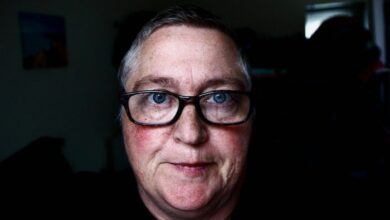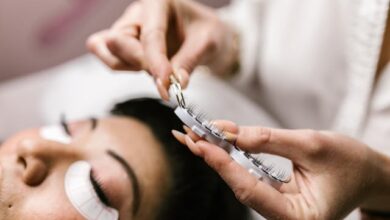Breast cancer screening recommendations: the latest updates you need to know

Did you know there are new updates to breast cancer screening recommendations?
We want to share these with you during Breast Cancer Awareness Month so you can ensure you are doing everything you can to stay safe and healthy.
According to the American Cancer Society (ACS) breast cancer is the most common cancer in women in the United States, with the exception of skin cancer. It is responsible for about 30 percent (or 1 in 3) of all new cases of cancer in women each year. The average age at breast cancer diagnosis is 62, but half of women who develop the disease are 62 or younger when they are diagnosed.
Overall, the average risk of a woman in the United States developing breast cancer is about 13 percent, or a 1 in 8 chance.
Given these statistics, understanding the latest screening recommendations can empower women to take charge of their health.
Breast cancer screening recommendations: new updates
Recently, the U.S. Preventive Services Task Force (USPSTF) made headlines updating breast cancer screening guidelines.
The new recommendation advises women to have routine screening mammograms every two years starting at age 40. This is a notable shift from what the task force previously recommended, when they proposed that women begin annual screening at age 50, with those between the ages of 40 and 49 following individualized recommendations from their doctors.
The update is based on a growing body of research showing that earlier and more frequent screening can lead to earlier detection of breast cancer, which is often associated with better outcomes.
The task force also wanted to “address disparities in breast cancer mortality, especially among Black women, who are more likely to be diagnosed with aggressive subtypes of cancer at later stages and face disproportionately higher mortality rates: 40 percent higher compared to white women women in the United States. .”
The recommendations also include digital breast tomosynthesis, also known as 3D mammography, as a primary screening modality. This type of screening has shown promise in improving the benefit-risk ratio compared to traditional digital mammography, primarily by reducing false-positive results.
Unfortunately, 3D mammograms often cost more than 2D mammograms, and insurance policies may not cover these additional costs. Contact your provider.
Breast cancer screening recommendations: More work needs to be done
The task force noted that while these updates should help, there are still challenges in ensuring all women are appropriately screened, diagnosed and treated. For example, studies have shown inequality in access to 3D mammography facilities, meaning many women do not have access to this advanced technology.
We also need more research into additional forms of screening – such as ultrasound or MRI – for women with dense breasts.
“Nearly half of all women in the United States have dense breasts,” the task force noted, “and this is a normal variation associated with a small increase in breast cancer risk, similar to having an aunt with breast cancer . evidence for or against recommending additional screening for this population.”
This is now an urgent issue. Starting in September 2024, the U.S. Food and Drug Administration (FDA) will require all U.S. screening facilities to inform women about their breast density with their mammography results.
Finally, there are questions surrounding artificial intelligence (AI) and its use in image interpretation in mammography. AI algorithms “show promise,” the task force said, in improving cancer detection, but how that will impact patient outcomes is still uncertain.
AI tools have also been tested primarily on white women, which could exacerbate existing disparities in various populations.

Breast cancer screening recommendations: What else you need to know
In addition to the above updates, women should also be aware of additional guidance from various health organizations.
American Cancer Society (ACS)
The ACS recommends that average-risk women begin annual screenings at age 45, with the option of starting at age 40. Women age 55 and older can switch to biennial screenings or continue annually.
National Comprehensive Cancer Network (NCCN)
The NCCN suggests that average-risk women begin annual screenings at age 40. If a family member has been diagnosed with breast cancer, women should begin screening when they are 7 to 10 years younger than when the family member was diagnosed. They emphasize that women should have a conversation with their healthcare providers to personalize their screening plans based on their risk factors.
American College of Radiology (ACR)
The ACR supports annual screening from age 40.

Breast Cancer Screening Recommendations: What If I’m at High Risk?
Women who are at high risk for breast cancer based on the factors below should get a breast MRI and mammogram every year, starting at age 30, according to the ACS.
High-risk women include women who:
- Have a lifetime risk of breast cancer that is about 20 to 25 percent greater, according to risk assessment tools that rely primarily on family history.
- If you have a known BRCA1 or BRCA2 gene mutation.
- Have a first-degree relative (parent, brother, sister or child) with a BRCA1 or BRCA2 gene mutation, and who has not undergone genetic testing themselves.
- Had radiotherapy to the chest before age 30.
- If you have Li-Fraumeni syndrome, Cowden syndrome or Bannayan-Riley-Ruvalcaba syndrome, or have first-degree relatives with any of these syndromes.
What about self-exams?
In the past, women were advised to perform annual self-exams and/or physical breast exams with a healthcare professional. However, the ACS now notes that research “has not demonstrated a clear benefit” from these exams:
“There is very little evidence that these tests help detect breast cancer at an early stage if women are also getting screening mammograms.”
However, they note that when breast cancer is discovered by symptoms (rather than through screening), it is usually because a woman discovers the symptom – such as a lump in the breast – while bathing or dressing.
“Women should be familiar with how their breasts normally look and feel,” the ACS advises, “and should promptly report any changes to a health care provider.”
The ACS no longer recommends regular clinical breast examinations or breast self-examinations as part of a routine breast cancer screening program.
Are you aware of the updated breast cancer screening recommendations?
Featured image by Anna Tarazevich via Pexels.





